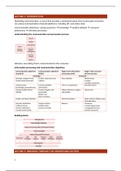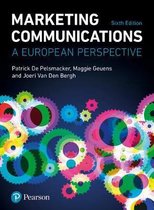Samenvatting
Summary Lectures Marketing Communication Tilburg University 2020
Summary of all lectures of the course Marketing Communication (Spring 2020) of the Master Marketing Management of Tilburg University. Written in English. The summary contains all the notes and examples that are given during the lectures.
[Meer zien]





